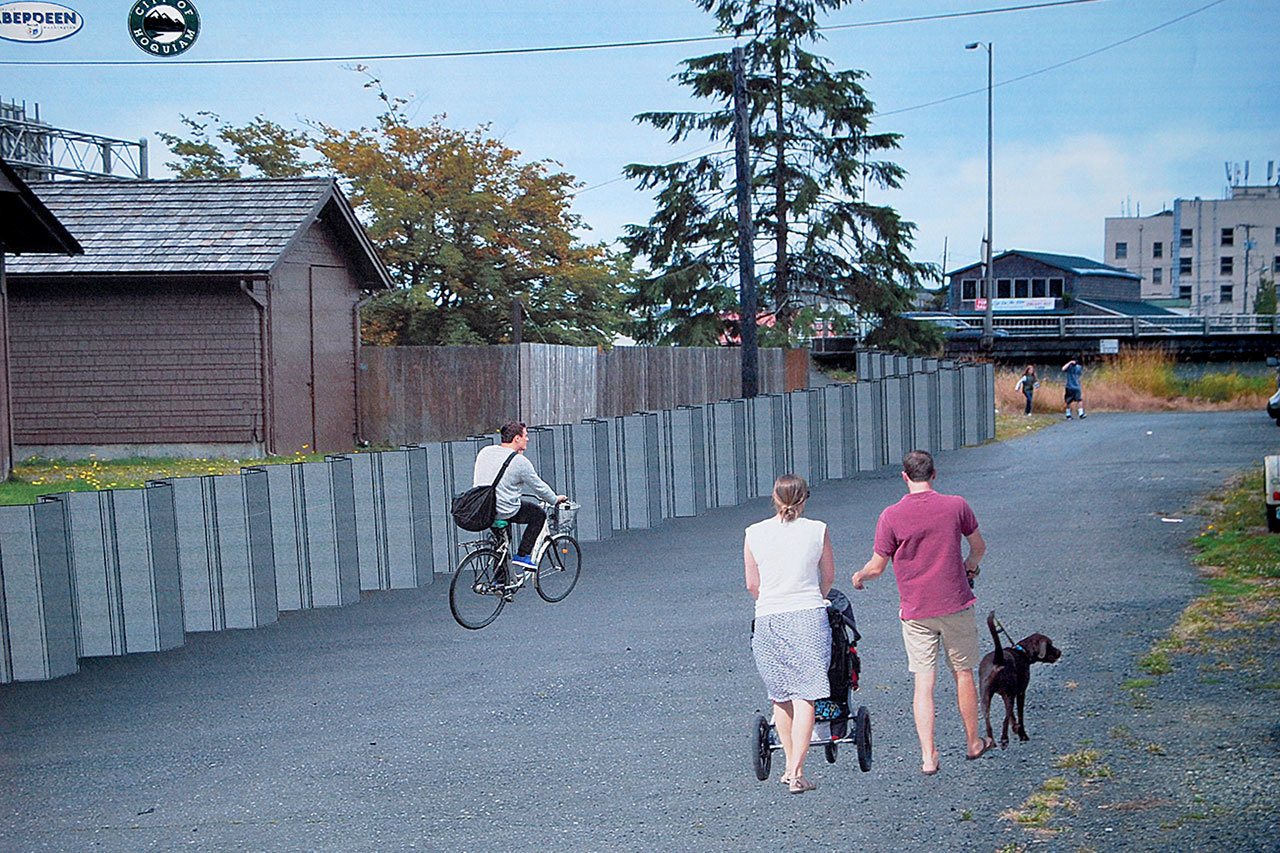Flooding has been an issue in the Aberdeen/Hoquiam area for as long as anyone can remember, but the devastating floods of January 2015 brought into sharp focus the need for a comprehensive plan to head off large-scale damage.
To that end, city officials, with support from Congressman Derek Kilmer’s office, rallied to find such a solution. The result was a year-long study to identify the major problem areas and craft solutions to keep businesses and homes out of harm’s way, and preferably out of FEMA’s mandatory flood insurance zones.
The final version of that plan is now finished, and the city councils of Aberdeen and Hoquiam will decide next week whether to adopt the comprehensive – and long-titled — TimberWorks Resiliency and Restoration Master Plan to Reduce Flood Risk.
The plan envisions a series of projects in both cities that will address tidal flooding and flooding caused when rainstorms overwhelm stormwater drainage systems. Along with addressing the high water issues, the plan has the potential to enhance fish and wildlife habitat, and increase recreation and open space opportunities by including aesthetic and public access components.
The master plan is broken into six focus areas: West Hoquiam, East Hoquiam, Fry Creek, West Aberdeen, East Aberdeen and South Aberdeen. Of these areas, Fry Creek was the one that public comment strongly favored as the most critical. The Fry Creek portion of the master plan best illustrates the goal of the TimberWorks plan: It combines land conservation in the upper portions of the creek, which reduces runoff and erosion, protects habitat and has the potential for public access and trails. Restoring Fry Creek would add another 5.5 acre feet of water storage and would also enhance salmon habitat. The West End Playfield is included in the Fry Creek portion of the plan; it would be used to store floodwater, has the potential for water quality treatment and would still be a place the community could use for recreation.
Project costs are in the master plan, and range from a few hundred dollars for landscaping to millions to replace culverts, restore floodplain connectivity and create park spaces. The plan to reduce paved width and integrate bioretention swales – basically extending existing curbside grassy areas with built-in dips to collect rainwater – could run more than $2.5 million depending on the size of the project. And replacing, adding or updating storm water pumps is among the bigger ticket items; the estimated cost of adding a pump to increase the capacity of Franklin Field to store water is estimated at up to a half a million dollars.
Some funding has already been secured for the Fry Creek project by the City of Aberdeen. The city council voted to approve the receipt of grant funds from the Chehalis River Basin Flood Authority at their last meeting. Other sources of funding for the many other projects across the two-city area are available but must be sought out by the cities themselves.
“For the most part, staff at the cities will be the ones seeking the grants, but there are times when consultants offer to help with the hope that they later will get the consulting work after receiving a successful grant,” said City of Hoquiam Administrator Brian Shay. “Projects could be funded with a variety of sources. Besides grants, each city has a storm water utility that generates funding for projects. Hoquiam also can fund water, sewer, or storm water improvements with our timber sale revenue.”
Implementation of the proposed projects and programs will be led by the cities of Aberdeen and Hoquiam with support from partners and will occur in phases over time. The timeline for implementation will be driven by the availability of staff resources and funding.
The Aberdeen City Council is scheduled to vote on the proposal Dec. 14, Hoquiam two days earlier, Dec. 12, at their regular meetings. “By adopting the plan, the Council would be ratifying the commitment to address the problems and solutions in the plan,” said Shay. “It is not binding, but establishes a formal set of goals.”
The master plan can be viewed online at http://www.ezview.wa.gov/timberworks; click on the “library” button to find the report.


